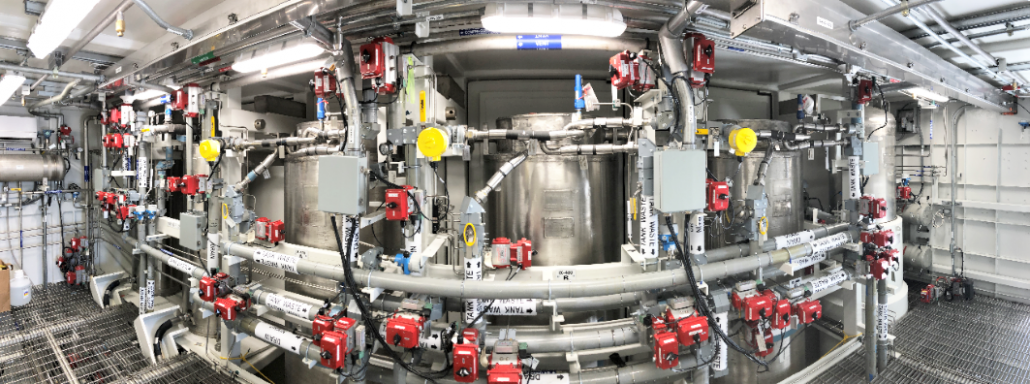
A storage tank spoiled a batch of liquid radioactive waste at the Hanford Site that was thought to be clean enough for disposal, according to a contractor memo seen by the Exchange Monitor.
The waste from Hanford’s tank farm, part of a less-radioactive tranche that is supposed to be solidified starting in 2025 by the Bechtel National-built Waste Treatment and Immobilization Plant, had been scrubbed by the Tank Side Cesium Removal (TSCR) outside the plant and piped into a nearby tank, designated AP-106, for storage.
But recent sampling of TSCR-treated waste stored in AP-106 revealed higher levels of radioactive contamination than is allowed in the Waste Treatment and Immobilization Plant during its Direct Feed Low Activity Waste phase, according to an Oct. 3 memo from the site’s liquid-waste prime contractor, the Amentum-led Washington River Protection Solutions.
“[W]hile minimal, the cesium increase now exceeds the waste acceptance criteria,” for the vitrification plant, Geoff Tyree, DOE Hanford spokesperson, said in a Thursday email reply to Exchange Monitor. “In an operating environment, you have risks that are known and unknown,” the spokesperson said.
“This is not a TSCR issue,” Wes Bryan, president and project manager of Washington River Protection Solutions wrote in the memo. The issue is with the tank itself, where a “small liquid heel and some undissolved residual waste remained on the tank walls” after site personnel in 2020 cleared out AP-106 for use in the sprawling underground pumping that feeds the waste treatment plant.
“This was a known risk … [and] we have several options to resolve this issue without impacting our ability to meet the Waste Treatment Plant Low-Activity Waste hot commissioning date,” of 2025, Bryan wrote.
A team of experts from DOE and the contractors are working on the problem, Bryan said. It might be that running the recontaminated waste through TSCR again will help.
“We will start TSCR Batch 4 to continue wetting the walls of AP-106,” Bryan said. This should “remove as much residual cesium from the tank as possible as we pursue further options, including processing the waste through TSCR again to remove the dissolved cesium.”
“The experience gained for our team in working through this issue will be invaluable experience for similar types of issues as we drive through the rest of the commissioning process towards operations,” DOE’s Tyree said in his email.
The DOE contractor planned to start its fourth TSCR run in September. That batch run is underway and 638,000 gallons have already been treated by TSCR. DOE and the contractor are more than halfway toward their goal of having 1 million gallons pre-treated and ready to be fed into the vitrification plant.
Hanford’s underground tanks contain some 56 million gallons of liquid radioactive waste left over from decades of plutonium production for nuclear weapons. Production began during the Manhattan Project and ran through much of the Cold War.
The Waste Treatment and Immobilization Plant as constructed can only solidify a portion of Hanford’s less-radioactive waste, called low-activity waste. DOE has yet to approve a means of solidifying high-level waste or settle on a means of solidifying the low-activity waste that cannot be treated in the existing plant. One option for the later tranche of waste is mixing it with concrete-like grout.